Heading out the door? Read this article on the new Outside+ app available now on iOS devices for members! Download the app.
There’s so much more to yoga than what happens on the mat. When you need a little push in the right direction or a fresh perspective, the Yoga Sutra is your guidebook for living with intention. We handpicked 30 essential sutras to return to again and again.
Atha yoga anushasanam

Now, the teachings of yoga.
—Yoga Sutra I.1
Yoga citta vritti nirodhah
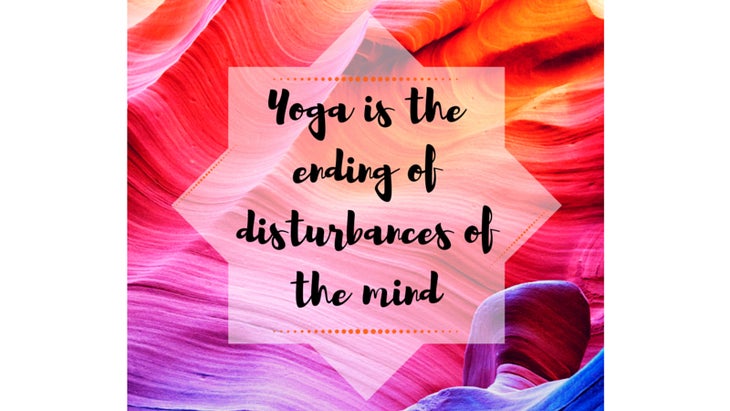
Yoga is the ending of disturbances of the mind.
—Yoga Sutra I.2
See also Intro to Yoga Philosophy: Sutra School 1.2
Tada drastuh svarupe avasthanam
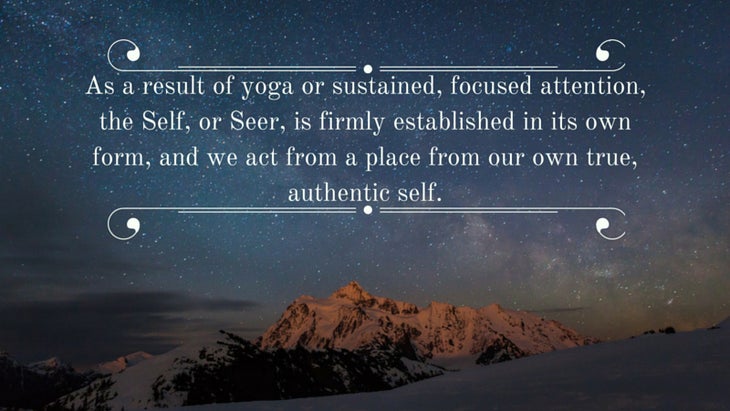
As a result of yoga or sustained, focused attention, the Self, or Seer, is firmly established in its own form, and we act from a place from our own true, authentic Self.
—Yoga Sutra I.3
See also Sanskrit Top 40: Must-Learn Lingo for Yogis
Vrttayah pancatayyah klistaklistah pramana viparyaya vikalpa nidra smrtayah

There are five functions or activities of the mind, which can either cause us problems or not. They are: correct perception, misunderstanding, imagination, deep sleep, and memory.
—Yoga Sutra I.5–6
See also The Five States of Mind
Abhyasa vairagyabhyam tat nirodhah

In order to achieve a state of yoga, one must develop both practice and detachment.
—Yoga Sutra I.12
See also Make the Space for Your Practice
Tatra sthitau yatnah abhyasa
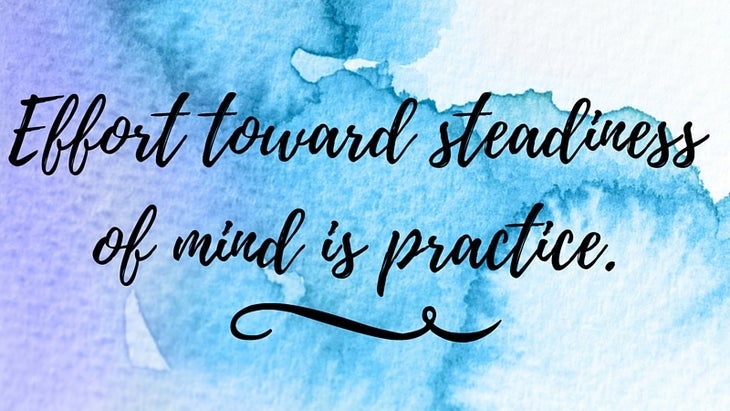
Effort toward steadiness of mind is practice.
—Yoga Sutra I.13
See also Patanjali Never Said Anything About Alignment
Sa tu dirgha kala nairantarya satkara adara asevita drdha bhumih

To achieve a strong foundation in our practice, we must practice over a long time, without interruption, believing in it and looking forward to it, with an attitude of service.
—Yoga Sutra I.14
See also Patanjali Never Said Practice Is Optional
Vitarka vicara ananda asmitarupa anugamat samprajnatah
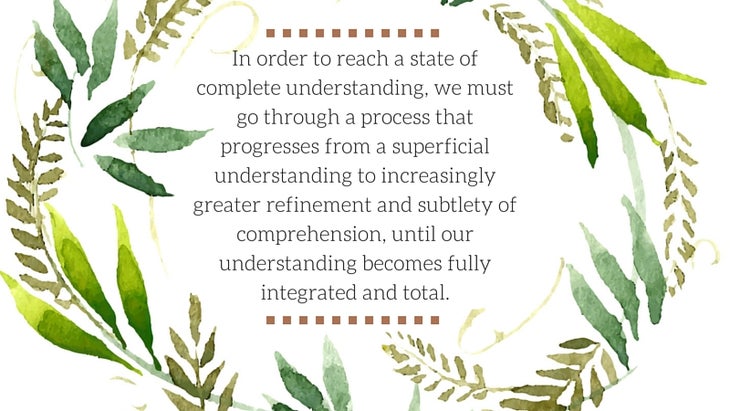
In order to reach a state of complete understanding, we must go through a process that progresses from a superficial understanding to increasingly greater refinement and subtlety of comprehension, until our understanding becomes fully integrated and total.
—Yoga Sutra I.17
See also Slow Down + Take Time to Learn
Shraddha virya smrti samadhi prajna purvakah itaresham

For those of us who were not born into states of higher consciousness or knowing, we must cultivate self-confidence and conviction to help us maintain our persistence and strength, and to remember our direction so that we may attain our goal of a focused mind and clear perception.
—Yoga Sutra I.20
See also Consciousness in Motion: Vinyasa
Isvara pranidhanat va

[Samadhi is attained] through complete and total surrender to a higher power.
—Yoga Sutra I.23
See also Tap Your Higher Power
Taj japas tad artha bhavanam

The recitation of that [syllable , OM] [leads to] the contemplation of its meaning.
—Yoga Sutra I.28
See also Intro to Chanting, Mantra, and Japa
Tatah pratyakcetanadhigamah api antarayabhavas ca

Then, the inner consciousness is revealed, we come to know the true Self, and our obstacles are reduced.
—Yoga Sutra I.29
See also Master Your Mind to Come Closer to Your True Self
Maitri karuna mudita upekshanam sukha duhkha punyapunya visayanam bhavanatah citta prasadanam

By cultivating attitudes of friendliness toward the happy, compassion for the unhappy, delight in the virtuous, and disregard toward the wicked, the mind-stuff retains its undisturbed calmness.
—Yoga Sutra I.33
See also 6 Steps To Channel Envy + Fulfill Your Greatest Potential
Pracchardana vidharanabhyam va pranasya

Or that calm is retained by the controlled exhalation and retention of the breath.
—Yoga Sutra I.34
See also Transform Your Practice With Better Breathing
Visoka va jyotismati
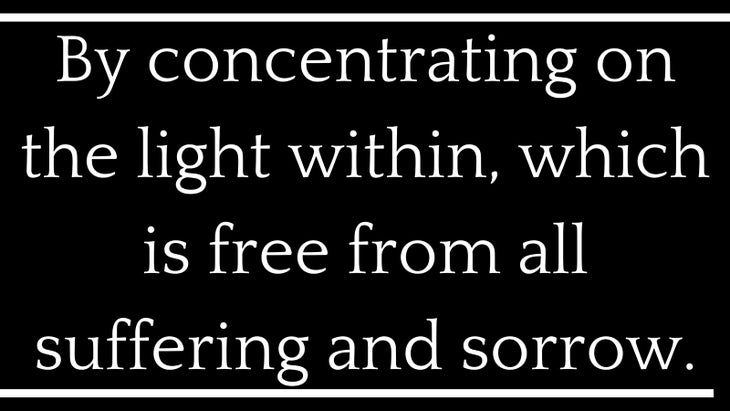
Or, [by concentrating on] the light within, which is free from all suffering and sorrow.
—Yoga Sutra I.36
See also Connect with Your Inner Spark
Anityasuci dhkhanatmasu nitya suci sukhatmakhyatir avidya

Ignorance is regarding the impermanent as the permanent, the impure as pure, the painful as pleasant, and the non-Self as the Self.
—Yoga Sutra II.5
See also Understand Avidya To See Yourself As You Are
Drgdarsana saktyoh ekatmata iva asmita

False identification is confusing the nature of the seer or Self with the nature of the instrument of perception. In other words, false identification happens when we mistake the mind, body, or senses for the true Self.
—Yoga Sutra II.6
See also How to See Your True Self
Parinama tapa samskara duhkhaih guna vrtti virodhaccha duhkham evam sarvam vivekinah

Change, longing, habits, and the activity of the gunas can all cause us suffering. In fact, even the wise suffer, for suffering is everywhere.
—Yoga Sutra II.15
See also Life Happens: The Yoga Sutra’s Take on Suffering
Heyam duhkham anagatam

Prevent the suffering that is yet to come.
—Yoga Sutra II.16
See also Reduce Suffering: How Yoga Heals
Drashtr drshyayoh samyogo heya hetuh

The cause of our suffering is the inability to distinguish between what is the truth (what perceives) and what appears to be the truth (what is perceived).
—Yoga Sutra II.17
See also Stoke Your Spirit: 31 Images to Inspire Transcendence
Sva svami saktyoh svarupa upalabdhi hetuh samyogah
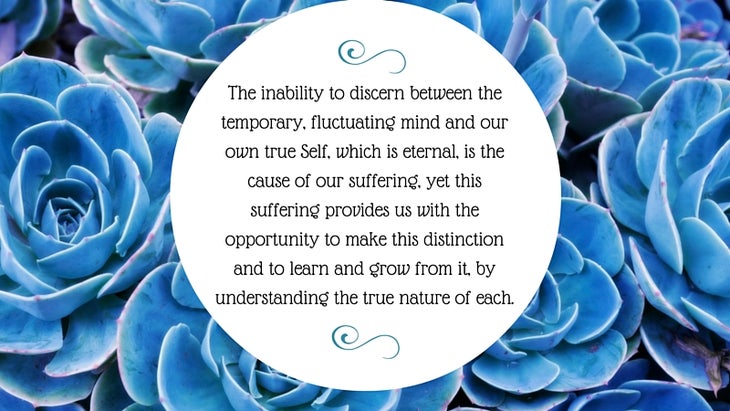
The inability to discern between the temporary, fluctuating mind and our own true Self, which is eternal, is the cause of our suffering, yet this suffering provides us with the opportunity to make this distinction and to learn and grow from it, by understanding the true nature of each.
—Yoga Sutra II.23
See also The Yoga Sutra: Your Guide To Living Every Moment
Vitarka badhane pratipaksha bhavanam

When disturbed by negative thoughts, opposite ones should be thought of.
—Yoga Sutra II.33
See also Tantra Meditation: Explore Negative + Positive Mind Energy
Samtosad anuttamah sukhalabha
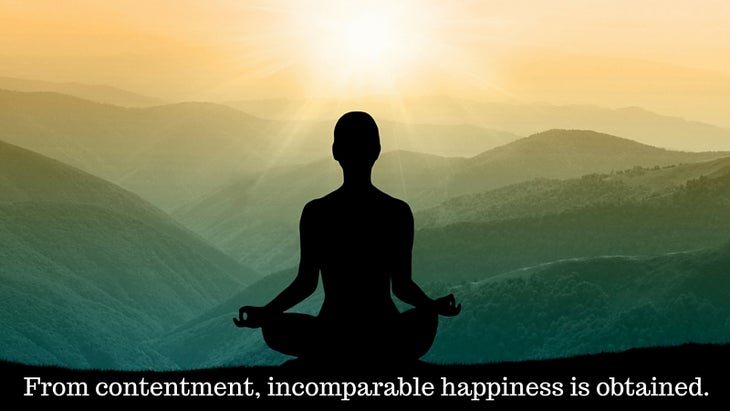
From contentment, incomparable happiness is obtained.
—Yoga Sutra II.42
See also Path to Happiness: 9 Interpretations of the Yamas + Niyamas
Sthira sukham asanam

Seated posture should be steady and comfortable.
—Yoga Sutra II.46
See also Meditation Sutra: Sthira Sukham Asanam
Tato dvandvanabhighatah

Thereafter [making a posture firm and comfortable], one is undisturbed by dualities.
—Yoga Sutra II.48
See also Everything You Need to Know About Meditation Posture
Tatah ksiyate prakasavaranam

As its result, the veil over the inner Light is destroyed.
—Yoga Sutra II.52
See also Yoga Wisdom: How to Spark Your Inner Light + Share It
Sarvarthataikagratayoh ksyayodayau cittasya samadhiparinamah

When there is a decline in distractedness and appearance of one-pointedness, then comes samadhi parinamah (development in samadhi).
—Yoga Sutra III.11
See also Stoke Your Spirit: 5 Ways to Move Toward Samadhi.
Samskara saksat karanat purvajati jnanam
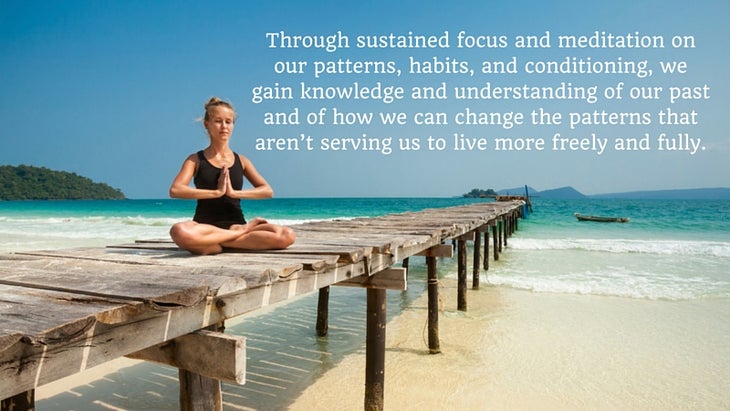
Through sustained focus and meditation on our patterns, habits, and conditioning, we gain knowledge and understanding of our past and of how we can change the patterns that aren’t serving us to live more freely and fully.
—Yoga Sutra III.18
See also Break Bad Habits Patanjali’s Way
Hrdaye citta samvit
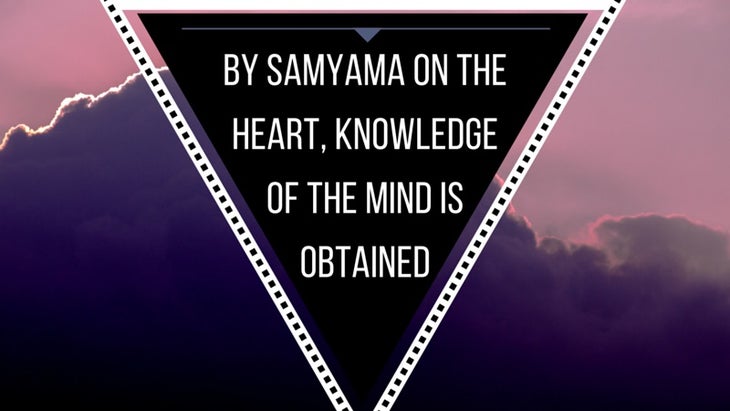
By samyama on the heart, knowledge of the mind is obtained.
—Yoga Sutra III.36
See also Mandy Ingber’s Sequence to Heal Your Heart + Embrace Joy
Vastu samye citta bhedat tayor vibhaktah panthah
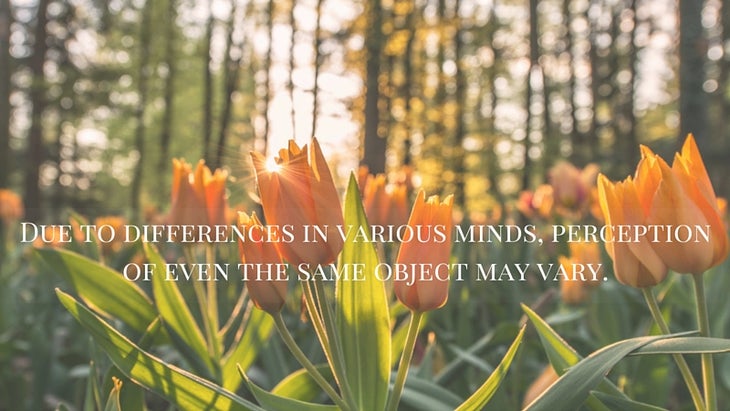
Due to differences in various minds, perception of even the same object may vary.
—Yoga Sutra IV.15
See also Dharma Mittra’s Practice to Develop Mindful Perception
To learn more: Yoga Journal co-founder Judith Hanson Lasater, PhD, and her daughter, Lizzie Lasater, have partnered with YJ to bring you a six-week interactive online course on Patanjali’s Yoga Sutra. Through study of this fundamental text, the Lasaters, with more than 50 years of combined teaching experience, will support you in deepening your practice and broadening your understanding of yoga. Sign up now for a transformative journey to learn, practice, and live the Sutra.